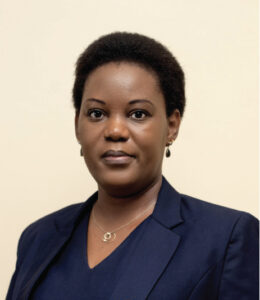- 1. BACKGROUND
The Infectious Diseases Institute (IDI) is a company limited by guarantee that researches infectious diseas- es and provides medical assistance to patients suffering from contagious diseases in Uganda. As part of its activities, IDI co-opts specialists to provide specialised support on the research projects it undertakes and such specialists are hired on more than one project at a time.
In 2012, the Uganda Revenue Authority conducted a tax compliance audit on IDI resulting in an assessment of UGX 1,927,442,716/- which comprised of WHT of UGX 150,464,359/- and PAYE of UGX 1,776,978,357/-. IDI contended that the assessments were based on URA’s regard for consultants, trainers, volunteers and di- rectors as employees.
IDI objected to the tax assessments made by URA, citing its guidelines that distinguish between employees and consultants. In response to this objection, URA reviewed the case and reduced the assessment to UGX
322,013,900. IDI complied with the revised assessment by paying the full amount, except for UGX 185,200,728, which it disputed as a PAYE liability.
Aggrieved by URA’s objection decision, IDI applied to the Tax Appeals Tribunal (TAT) challenging the de- cision. The question before TAT was whether the consultants were employees for tax purposes.
The Tax Appeals Tribunal (TAT) held that a director is considered an employee under the Income Tax Act. It further determined that anyone who receives a fixed or consistent income is classified as an employee for tax purposes. If a person’s income is steady and guaranteed, they are deemed an employee under the law. However, the TAT clarified that if someone is paid for less than two months, that income is not considered fixed or ascertainable. Therefore, any individual who receives payments for more than two months is re- garded as an employee for taxation purposes.
Dissatisfied with this decision, IDI appealed to the High Court.
- 2. ARGUMENTS FOR IDI
IDI objected to these assessments and made the following prepositions;
- i. Human Resource Manual and Employment Guidelines: IDI referenced its human resource manual and established guidelines that differentiate between employees and consultants, providing a frame- work for understanding employment status within the organization.
- ii. Sample Contracts: IDI presented sample contracts that explicitly outline the distinctions between em- ployees and consultants, reinforcing its position on the nature of its engagements.
iii. Misclassification Argument: IDI contended that URA’s assessments were flawed, as they incorrectly classified consultants, trainers, volunteers, and directors as employees. IDI argued that these individ- uals did not meet the criteria for employee status as defined by tax law.
- ARGUMENTS FOR URA
URA argued and made the following prepositions;
- i. Reference to the Income Tax Act: URA asserted that one must refer to the Income Tax Act to deter- mine whether an individual is classified as an employee or a contractor. This Act defines an employee as someone who occupies a position that entitles them to fixed or ascertainable remuneration for tax purposes.
- ii. Control Over Consultants and Directors: URA contended that IDI had sufficient control over the con- sultants and directors to render it to reclassify them as employees.
- 4. APPEAL AND DECISION OF THE HIGH COURT
TESTS OF EMPLOYMENT
The Court stated that previous decisions have developed three tests to determine the existence of the em- ployment relationship namely;
The control test: To what extent does the employer control and dictate the work done by the person? Business integration test: To what extent is the person integrated into the organisation, in terms of a
dedicated role with clear reporting lines?
The mixed methods test: a blend of both methods stated above.
PRINCIPLES OF EMPLOYMENT
The Court stated that in determining whether one is an employee or otherwise rely on the following princi- ples;
Agreement to provide labour in exchange for a wage: whether the persons are paid fixed fees on the ba- sis of deliverables or they are paid for days worked.
Agreement that the employee will be subject to a sufficient degree of control: who, practically, exercis- es functional control over the delivery of the services.
The other terms/incidents of the relationship are consistent with employment: Things such as entitle- ment to leave, sick days, NSSF contributions, work hours, restriction on working with our organisations, streamlined roles or clear reporting lines.
QUESTIONS TO BE ASKED AND ANSWERED
In the determination of whether an employment relationship exists, the following questions must be con- sidered.
- a. What work does the person do?
- b. Who determines the work to be done, how it shall be done, the means to be employed in doing it, the time when, and the place where it shall be done?
- d. Whether the person is paid a fixed or ascertainable wage?
- e. Who provides the tools of work?
- f. How essential/critical the work is to the mission or mandate of the organisation?
- g. Whether the person does any work for other entities, including whether their contract precludes them from doing such work.
- Who takes the benefit for the work/who owns the work product?
IS A DIRECTOR CONSIDERED AN EMPLOYEE FOR TAX PURPOSES?
The Court clarified that, for tax purposes, directors are indeed regarded as employees. However, this clas- sification only applies to individuals who meet the definition of a director under the Companies Act. This means that simply having “director” in a job title, such as “Managing Director” or “Director of Operations,” does not automatically make someone a director for tax purposes. If a person’s role does not align with the legal definition of a director as set out in the Companies Act, they cannot be treated as a director under the Income Tax Act. Therefore, only those who are legally recognised as directors in accordance with the Com- panies Act will be taxed as employees.
WHAT IS A FIXED OR ASCERTAINABLE REMUNER ATION
The Court has held that for someone to be classified as receiving fixed or ascertainable remuneration, they must hold a position with some level of permanency. Unlike employment, consultancy contracts are gen- erally based on specific deliverables, meaning that if a consultant does not fulfil their obligations, they are not entitled to payment.
The court clarified that receiving payments on a regular, even monthly basis, does not automatically make a consultant an employee for tax purposes. It noted that for instance, professionals like chefs, lawyers, or doctors may receive monthly retainers for their services, but that alone does not make them employees.
Therefore, to be considered as an employee, it will depend on whether (a) such a person occupies a position in the employer of some permanency that can be properly considered to be an employment position (rather than a consultancy role), (b) whether they are entitled to a fixed or ascertainable remuneration and (c) wheth- er that entitlement has some degree of permanency.
WHO IS A CONSULTANT?
The Court explained that consultants enter a contract where either (a) they would be paid when utilised or (b) when they deliver deliverables, unlike in employment where utilisation/performance is a recurrent run- ning obligation and payment of a wage is typically certain.
THE DIFFERENCE BETWEEN AN EMPLOYEE AND A CONSULTANT
To help illustrate the differences between an employee and a consultant, the Court provided the following guide;
Factor Employee Consultant | ||
Control of Work | Typically, does not dictate the work to be done, how it should be done, the means to be employed in doing it, the time when, and the place where it shall be done. | Typically determines the work to be done, how it shall be done, the means to be employed in doing it, the time when, and the place where it shall be done. |
Place of work | Typically works at the employer’s premises or a place designated by the employer. | Typically choose their place of work. |
Pay | Usually earns a fixed or ascertainable wage. Paid for days worked. | Pay typically varies and depends. Paid fixed fees on the basis of deliverables. |
Tools of Work | The employer typically provides tools for work. | Typically pays for sources or their tools of work. |
Integration of Work | Typically undertakes work that is critical/essential to the mission or mandate of the organisation. | Typically undertakes work that is not critical/essential to the mission or mandate of the organisation. |
Other Engagements | Typically works exclusively for their employer and is barred from taking additional engagements without employer consent. | Typically works for more than one entity and is not precluded from undertaking additional engagements. |
Benefits | Employees are typically entitled to various benefits including bereavement contributions, workers’ contributions, etc. | Consultants are not entitled to various benefits including leave, bereavement contributions, leave, workers’ contributions, etc. |
Integration | Typically occupies a role integrated and embedded in the Appellant’s structure with clear reporting lines. | Consultants do not have their roles clearly embedded in the organisational structure of the entity and typically engage the entity’s structure as “outsiders”. |
- ANALYSIS
The decision of the High Court is a welcome development, particularly in light of the Tax Appeals Tribunal’s previous ruling that classified any individual receiving fixed or ascertainable remuneration for over two months as an employee. This broad definition posed significant challenges for organizations like the Infec- tious Diseases Institute (IDI), which often engages consultants and specialists on various projects. The High Court’s clarification and guidance was therefore overdue, providing much-needed clarity on the distinc- tions between employees and consultants.
This ruling not only helps to delineate the roles and responsibilities of different types of workers but also addresses the complexities that arise in tax compliance. By establishing clear criteria for employment clas- sification, the High Court has created a more equitable framework that can alleviate confusion for both em- ployers and tax authorities.
However, the Court did not answer the question of whether the consultant should be in the business of pro- viding the services they are contracted to provide, a long-standing issue of contention between taxpayers and the Uganda Revenue Authority.
It remains to be seen whether or not the Uganda Revenue Authority will appeal the decision to the Court of
Appeal.
- 6. CONCLUSION
The decision of the High Court in the case of Infectious Diseases Institute v. Uganda Revenue Authority represents a crucial turning point in the classification of employees and consultants within Uganda’s tax framework, by clarifying the criteria for determining employment status, the Court has addressed the chal- lenges posed by the Tax Appeals Tribunal’s previous ruling, which broadly classified individuals receiving fixed or ascertainable remuneration for over two months as employees.
The ruling does leave some questions unanswered, particularly regarding whether consultants should be recognized as businesses providing services rather than merely individuals contracted for specific tasks. As stakeholders await potential appeals from URA, this decision highlights the necessity for ongoing dis- cussions about employment classification in Uganda. Ultimately, it underscores the importance of precise definitions in employment relationships, fostering a clearer understanding that can facilitate better com- pliance and reduce disputes between employers and tax authorities.

Stephen Tumwesigye
Managing Partner
M: +256 (0) 774 334 908
E: stumwesigye@taslafadvocates.com

Partner
M: +256 759 757 180
E: info@taslafadvocates.com

Principal Associate
M: +256 787 726066
E: kayebare@taslafadvocates.com

Legal Associate
M: +256 781 843 633
E: gokitoi@taslafadvocates.com




